Biggest Contract Busts in NFL History

Identifying the biggest contract busts in the NFL is a more difficult task than in other sports. For one, there’s no single, consistent statistical measure that can be compared across positions. NFL contracts are also notoriously impermanent, with a bad deal often resulting in a player getting unceremoniously cut. So, unlike in, say, baseball, where a bad contract still gets paid out, what a player signs for and what he actually ends up getting paid can vary widely.
See: How Rich Are Tiger Woods, Jordan Spieth and 43 More of the Wealthiest Golfers of All Time?
Discover: LeBron James and More of the Richest Athletes Younger Than 40
How then do you identify the bad contracts? A new study from GOBankingRates compared contracts across positions, taking into account a few key metrics. These metrics include the number of games played and started within the terms of the contract, the estimated amount of money the player earned per game (adjusted for inflation) based on the value of their contract and the annual salary at signing.
Read: The Highest-Paid Player on Every NFL Team
Looking at all of the metrics collectively, GOBankingRates was able to get a sense of which players ultimately fell shortest of team expectations. Take a look at how things turned out for these highly paid players.
Last updated: July 21, 2021
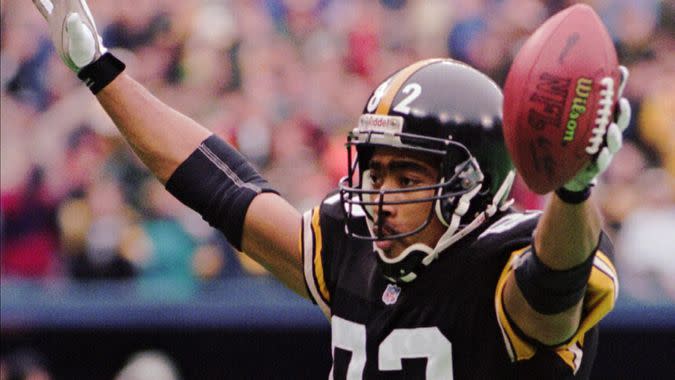
Yancey Thigpen
When it comes to NFL veterans floundering, it's not always clear if age or a new system is to blame, but the tale of Yancey Thigpen leaves little room for interpretation.
Thigpen had clearly earned his stripes by the time he signed a five-year, $21 million deal with the Tennessee Titans — finishing off an excellent six-year run in Pittsburgh that saw him top 1,300 receiving yards twice.
But, the guy the Titans got wasn’t quite the same — or at least he wasn’t being deployed in the same way. Thigpen ended up starting just 18 of the 80 games he signed on for, producing a grand total of 1,430 receiving yards over three seasons in Tennessee.
Take a Look: The Biggest NFL Contracts of 2020
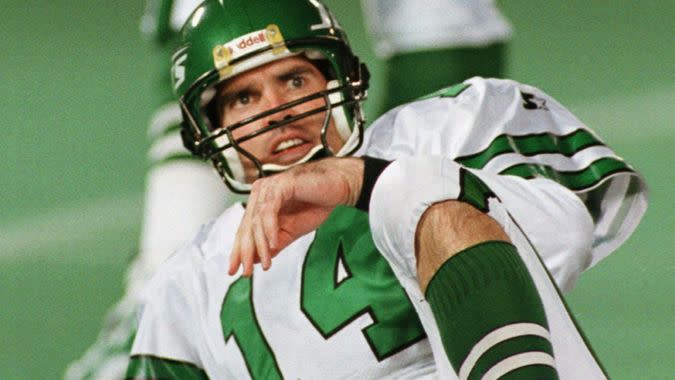
Neil O'Donnell
A truly great team can get by with a middling quarterback. A bad quarterback, though, will lose winnable matchups for even the best teams. As such, one might see some reason to the New York Jets’ disastrous Neil O’Donnell signing in 1996.
O’Donnell wasn’t good in Pittsburgh, but he was a capable player who helped steer his team to 37 wins in 53 starts from 1992 to 1995. For the Jets, O'Donnell proved enticing enough for the organization to throw a five-year, $24 million deal his way.
Whatever was working for O’Donnell in Pittsburgh, though, never translated in the Big Apple. O’Donnell would start exactly one-quarter of the games he signed for, including just six in his first year with the team -- all of which they lost.
Check Out: 21 Richest No. 1 NFL Draft Picks

Jeff Garcia
Few teams have experienced the sort of streak of middling-to-bad quarterbacks as the Cleveland Browns. Jeff Garcia is just one very short chapter of this sprawling epic. Garcia signed a four-year, $25 million deal with Cleveland in 2004. This would be the same Jeff Garcia who had made the Pro Bowl three times in a row from 2000 to 2002.
What the Browns got was not the Garcia they saw in San Francisco, as he muddled to a 3-7 record in 10 starts and was cut from the team the following off season. Garcia’s next stop would be the Detroit Lions, so apparently he was working on some sort of dysfunctional football franchise punch card.
Unlucky: 18 of the Richest NFL Players Who Never Won a Super Bowl
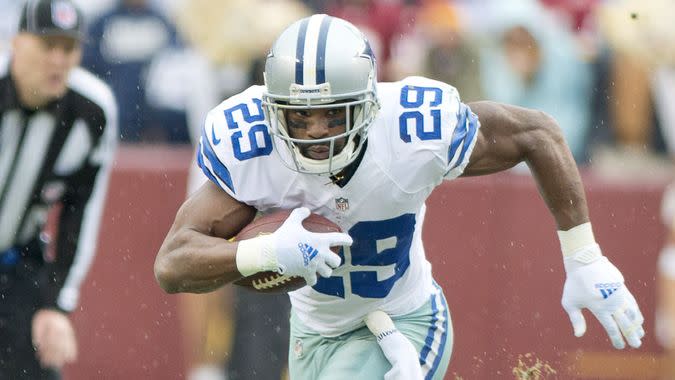
DeMarco Murray
DeMarco Murray’s career was a short but glorious one. The back produced three 1,000-yard rushing seasons and a rushing title in just seven seasons. But, the timing of those seasons is the real sticking point for Philadelphia Eagles fans. That’s because the unquestionable pinnacle of Murray’s career — a monster 1,845-yard season with the Dallas Cowboys in 2014, for which he earned NFL Offensive Player of the Year honors — was also what convinced Philadelphia to offer him a five-year, $40 million contract prior to the 2015 season.
Murray wound up starting just half the games that year for an Eagles squad that didn’t click. He finished with a paltry 702 yards on 193 carries.
Murray would bounce back the following year when he rushed for almost 1,300 yards, but he was with the Titans at that point, so it didn’t really provide much solace for the Eagles.
Financial Touchdown: How Much Drew Brees, Tom Brady and Other QBs Make Per Career TD Thrown

Desmond Howard
There aren’t a lot of people who could legitimately say they were a star kick returner in the NFL. Save for a handful of notables, kick returners are typically a player on your bench that has speed and can protect the ball but isn’t especially valuable outside of special teams. So, while the four-year, $6.1 million deal Desmond Howard signed with the Oakland Raiders in 1997 stands out as being especially bad — paying $6.1 million to ANY return specialist is probably not a great idea.
Ever heard of Glyn Milburn? Probably not. He was a return specialist who managed 9,788 kick return yards and 2,984 punt return yards from 1993 to 2001. Why should that matter to you? Because that’s 1,829 more kick return yards and 89 more punt return yards than Howard produced from 1992 to 2002. But, Milburn did not have two return touchdowns in a Super Bowl, so there were no $6 million contracts waiting for him. Howard would make it just two seasons in Oakland, playing in less than half the games he was originally signed for.
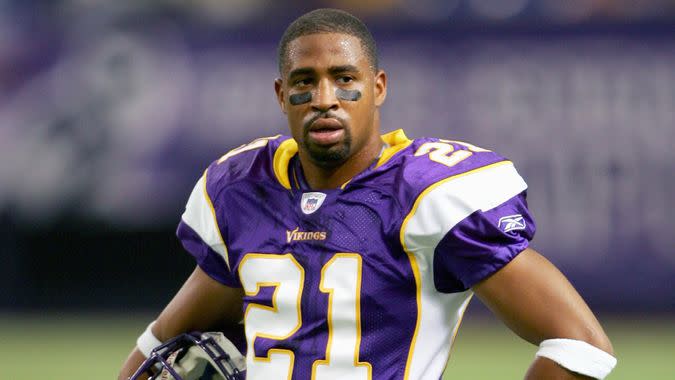
Fred Smoot
Fred Smoot made a name for himself working across the field from teammate Champ Bailey in Washington, where they made up one of the better cornerback tandems in football. So, when Smoot was up for free agency in 2005, the Minnesota Vikings tempted him away with a six-year, $34.7 million contract. Smoot ultimately lasted just two seasons with the Vikings, starting in less than 20 of the 96 games he signed for.
Check Out: 13 NFL Players Who Lost Millions
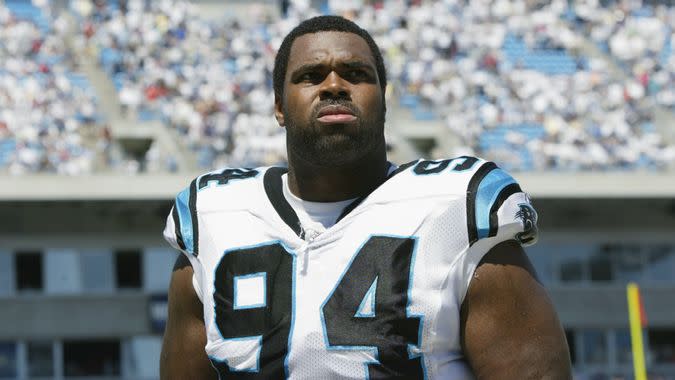
Sean Gilbert
Sean Gilbert skipped the entire 1997 season rather than play for Washington under a franchise tag. This was a smart move, evidenced by the seven-year, $46.5 million deal he scored prior to the 1998 season with the Carolina Panthers — who also parted with two first-round picks for the opportunity to sign the deal. Gilbert would start just 56 of the 112 games he signed on for.

Adam Archuleta
Archuleta, among the best-known members of the St. Louis Rams defense, was well known as a strong safety who hit like a sledgehammer. That reputation is likely what drove Washington to drop $35 million on seven years of his services, probably assuming they were sewing up their safety position for years to come. But Archuleta was just not the same guy in D.C. He started only seven of 16 games in his first season and was off the team before the start of the next season.
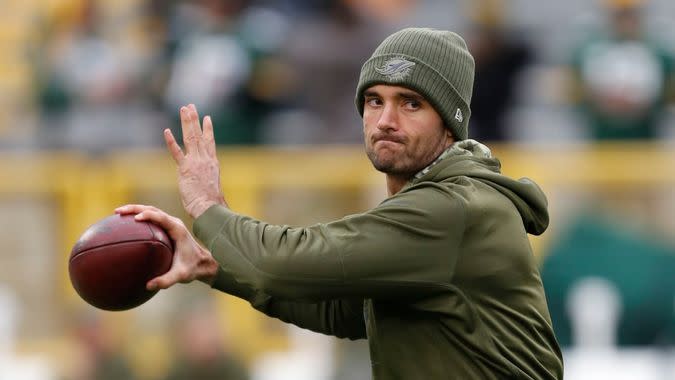
Brock Osweiler
Yes, there was a time when Brock Osweiler was a highly sought after free-agent quarterback. After playing backup to Peyton Manning in Denver, Osweiler finally got his chance when he made seven starts in 2015. It would prove a crucial seven games — the Broncos went 5-2 — in a season that ended in a Super Bowl, and nothing pushes up the value of a quarterback like that new Super Bowl smell.
The Houston Texans decided Osweiler was a franchise quarterback who had been hidden on the bench for years, only to discover that this career backup was, in fact, a career backup. He would start just 14 games during his first and only season with the Texans, and while the team went 8-6 in those games, his passing stats make it clear he wasn’t due a ton of credit for that success. The four-year, $72 million deal that Osweiler signed wound up being one the Texans almost immediately regretted.

Ed Reed
Ed Reed is rightly remembered for his years in Baltimore when he was a ball-hawking terror who always managed to show up at the right place and right time. But, like plenty of the all-time greats, his last season didn’t really reflect his peak abilities. That was particularly unfortunate for the Houston Texans as they signed him to a three-year, $15 million deal right before that last season. Reed would ultimately start as many games for the Jets — five — as he did for the Texans in his final NFL season.

Jevon Kearse
Jevon Kearse terrorized offensive backfields throughout his first five seasons in the NFL, tallying 47 1/2 sacks across his first 63 starts. As such, the Eagles probably thought they were lucky when they got a chance to offer him an eight-year, $65 million contract prior to the 2004 season. Kearse managed a passable 15 sacks over his next two seasons and then suffered a terrible knee injury in the third that left him unable to truly return to form. He started 39 of the 128 games he was signed to and was out of the NFL after 2009.
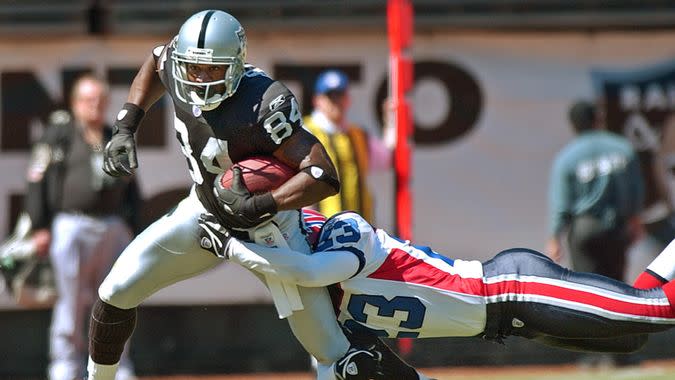
Jerry Porter
Maybe the Jaguars just goofed and thought they were signing Pittsburgh Steelers great Joey Porter and missed it while they skimmed the paperwork. Both were free agents prior to the 2008 season, so that would be an easy mistake to make. Otherwise, it sure looks like the Jaguars offered a six-year, $30.4 million deal to a 29-year-old wide receiver who had yet to crack either 1,000 yards receiving or 80 receptions across his eight seasons in Oakland.
Unfortunately, the first year of the contract was the final of Porter’s career. He would start just 6.25% of the games he signed on for, leaving the Jaguars likely wishing they had Joey Porter, instead.

Ladarius Green
Ladarius Green is the first and only tight end to appear on this list. Of course, that might be because you don't often see tight ends getting offered big-money contracts. Green’s four-year, $20 million deal with Pittsburgh isn’t exactly enormous, but having a $4 million tight end eating a hole in your roster can be a major burden, even just for a season. And it was just for a season. He started only two games in 2016, grabbing 18 passes for one touchdown and his walking papers before the start of the next season.
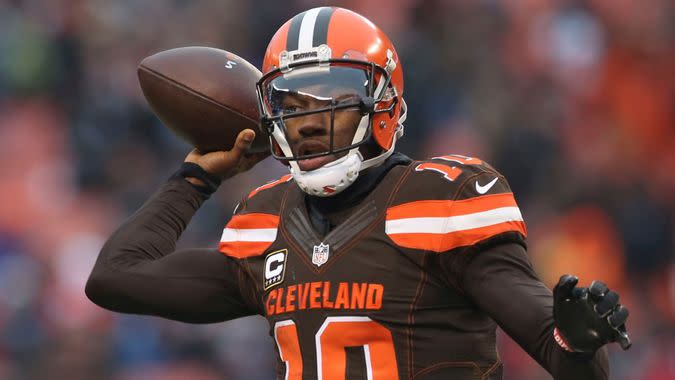
Robert Griffin III
In spite of a brilliant rookie year, by the time Robert Griffin III hit the free-agent market, he had already been eclipsed in Washington by Kirk Cousins — the Michigan State product who was taken later in the same draft as Griffin. So, while a two-year, $15 million contract isn’t exactly an enormous commitment, it’s still not hard to see where the Browns might have managed to duck this punch. When he promptly went 1-4 in his five starts, it’s not like they didn’t have a precedent.
Big Bucks: The Highest-Paid Player on Every NFL Team
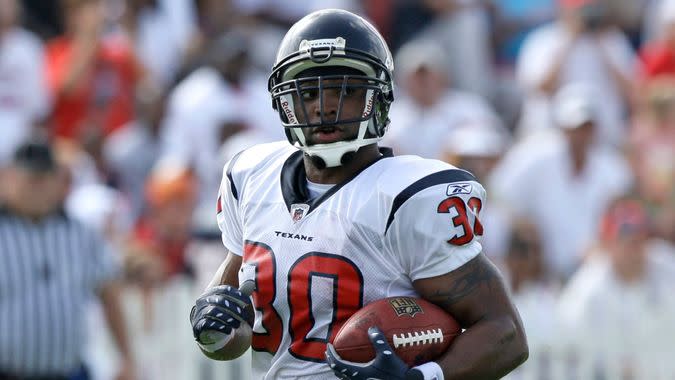
Ahman Green
“Ah, man” might be what the Texans were saying to themselves following Ahman Green’s stint in Houston. Green had produced six 1,000-yard rushing seasons in the last seven with the Green Bay Packers, meaning the Texans had every reason to believe they would be getting at least a decent starter for the $23 million they spent on him. But, NFL running backs tend not to have a lot of longevity, and Green’s best years were well behind him by the time he landed in Houston.

Joe Johnson
Joe Johnson had over 50 sacks during his seven seasons in New Orleans, including 21 in just his last two seasons prior to free agency. So, when the Packers signed him to a six-year, $33 million deal in 2002, they hoped to get a top-tier pass rusher on defense. Unfortunately, that two-season surge also appears to have been the last big effort of Johnson’s NFL career. Johnson registered a mere two sacks in a Packers uniform, started two games over the next two seasons and ended his NFL career thereafter.

Dwayne Bowe
This is another of those Browns contracts that just screams “unforced error.” They likely banked on the fact that Dwayne Bowe had been a reliable wide receiver with Kansas City for years. In his first six seasons, Bowe averaged 13.8 yards per catch and just short of 70 yards per game started. Had Cleveland signed Bowe earlier in his career, it would be hard to see fault in the two-year, $12.5 million deal the Browns offered him.
But they did not — the Browns offered him that deal prior to his ninth season, after he had averaged 12.2 yards per catch and 47.6 yards per game started for the last two seasons. It’s one thing not anticipating a player’s decline, it’s another when you choose to ignore declining production in a 30-year-old wide receiver. Bowe ended up playing in just seven games with Cleveland — starting none of them and getting nearly $1 million a game.
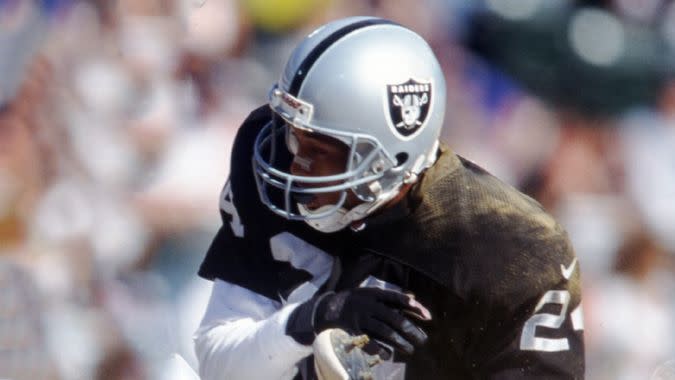
Larry Brown
When it comes to basketball coaches, the name Larry Brown carries a long, storied legacy. When it comes to NFL defensive backs, it’s a little more spotty.
Brown performed well with the Cowboys, particularly in his last two seasons when he snagged 10 picks. In what’s becoming a familiar tale, Brown’s contract year netted him a big, multiyear deal, but it did not translate into a sustained level of excellence on the field. Brown’s five-year, $12.5 million deal with the Raiders saw him play just 12 games in an Oakland uniform — where he started just once.
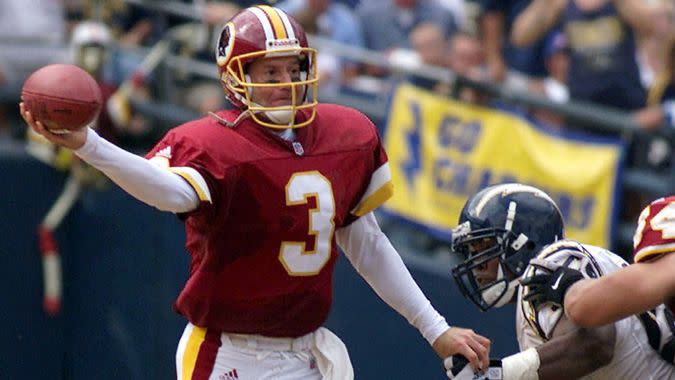
Jeff George
Look up “journeyman” in the dictionary and you might find a picture of Jeff George. He donned the uniform of five different NFL franchises before he was done, with most of them getting the good-but-not-great quarterback play that would at least keep you in games. Unfortunately for Washington, they went to that well one time too many, signing George to a four-year, $18.25 million deal in 2000 for a season that proved to be his last.
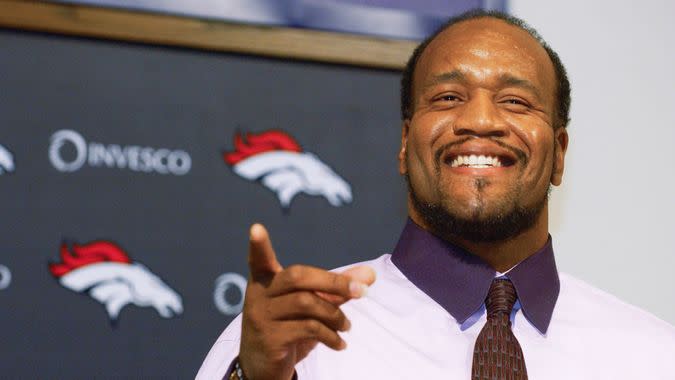
Daryl Gardener
The seven-year, $34.8 million deal to play for the Denver Broncos signed by Daryl Gardener did not grow into a fruitful relationship between team and player. While Gardener started 15 games for Washington the year before — tallying four sacks — he would start only two games for Denver. Ever.
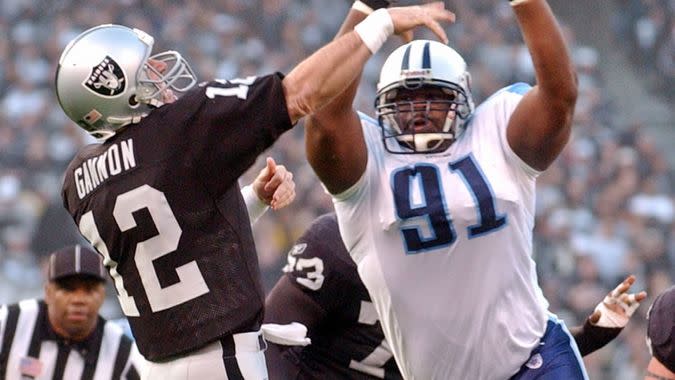
Albert Haynesworth
Albert Haynesworth was an extraordinary talent at defensive tackle with the Titans, the sort of freakish combination of size and speed that terrified offensive coordinators. The fact that he’s now best known for stomping on a guy’s face and signing one of the worst contracts in the history of Washington football — a franchise with a whole lot of really, really awful contracts — speaks to just how sharply his fortunes turned.
Haynesworth’s seven-year, $100 million catastrophe of a deal is now legendary for the scale of its ultimate implosion. Haynesworth never seemed quite as motivated in a Washington uniform, ultimately starting just over 10% of the games he was signed for. He was off the roster by what would have been the deal’s third year.
Find Out: Which NFL Teams Spent the Most in Free Agency?
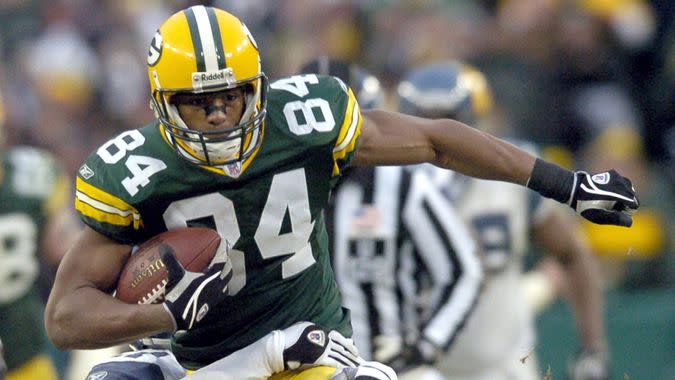
Javon Walker
Signing any player who’s about to turn 30 to a six-year NFL contract is not exactly advisable, because even the first year or two could reveal a dip in performance. Javon Walker was one of the league’s best receivers in his prime, but he managed to start just five games with Denver the season before Oakland offered him a six-year, $55 million deal to play with them. As such, the fact that he continued to struggle to stay healthy should have come as no surprise to the Raiders.
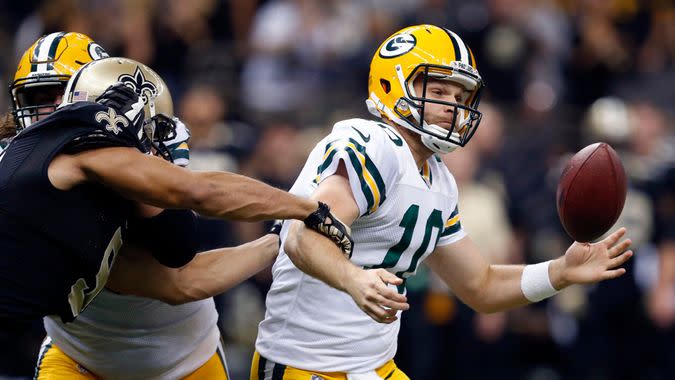
Matt Flynn
There are more than a few quarterbacks on this list, including several who — like Flynn — managed to score a very big, multiyear deal in spite of having never really been a starter. But that speaks to just how crucial the position can be. Teams need a presence at quarterback that’s at least adequate, forcing them to hope against hope that the only reason this guy has been sitting the bench is because the guy ahead of him is just a little bit better.
In Flynn’s case, no one thought he was as good as Aaron Rogers, but clearly Seattle saw something in his 480-yard, six-touchdown performance in the 2011 regular-season finale. The Seahawks offered him a three-year, $19.5 million contract that offseason. But judging any quarterback by his best game against the Lions is playing with fire, and Flynn would start two less games in Seattle than he did in Green Bay — which is to say, none.
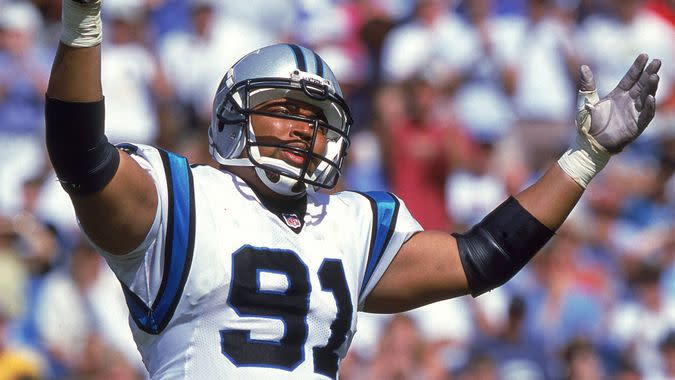
Chuck Smith
Life’s not fair. That any person should have to be faced with the cruel consequences of aging at 30 is just wrong. But while most people only have to notice their metabolism slowing almost as quickly as the severity of their hangovers is accelerating, professional athletes have to watch their livelihood evaporate.
Chuck Smith appeared to have reached his zenith at age 30, a tragically familiar story. Smith celebrated his dirty 30 with a 10-sack season for Atlanta in 1999, which secured him a five-year, $21 million deal with the Panthers that offseason.
Smith, though, would struggle with injuries and ultimately appear in just two games — both starts — in his career with the Panthers.
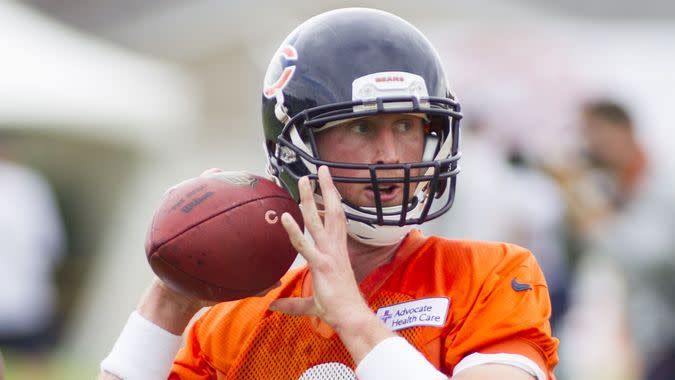
Mike Glennon
The Chicago Bears have a very long, very troubled history with the quarterback position. While their disastrous decision to trade away a decade’s worth of quality draft picks for Jay Cutler might be among the most damaging, it was their effort to replace him that produced the biggest contract bust in recent NFL history.
Glennon had been OK in Tampa during his first three seasons, struggling on a losing team but showing some promise. With the Bears drafting Mitch Trubisky, the long-term plan was for their hot-shot new rookie to grow into a starting role and eventually let Glennon step aside.
But Glennon’s four starts made the three-year, $45 million deal he signed in 2014 seem like a real piece of overkill. The Bears released him before the next season.
More From GOBankingRates
Jordan Rosenfeld contributed to the reporting for this article.
Methodology: In order to find the biggest NFL contract busts of all time, GOBankingRates first determined a player had to sign a multiyear contract and it had to be a non-rookie contract. With these parameters in place, GOBankingRates referenced Bleacher Report’s “NFL Free Agency: 50 Biggest Free-Agent Signing Busts in NFL History” and YardBarker’s “Biggest NFL Free Agent Busts of All Time," with contract data sourced from both Spotrac and the aforementioned articles. With 50 players/contracts selected and salaries adjusted for inflation to 2020 dollars, GOBankingRates scored each contract across the following factors: (1) average yearly value of the contract; (2) dollars per game sourced by taking the inflated-adjusted average yearly value of the contract and dividing it by total games played for the duration of the contract; (3) total percent of games played created by dividing games played against the maximum possible games during the contract; (4) percent of games started; and (5) average approximate value per year. All statistics were sourced from Pro-Football-Reference. All factors were then scored and combined with the highest score determining the biggest NFL contract bust of all time. All data was collected and up to date as of July 10, 2020.
This article originally appeared on GOBankingRates.com: Biggest Contract Busts in NFL History

